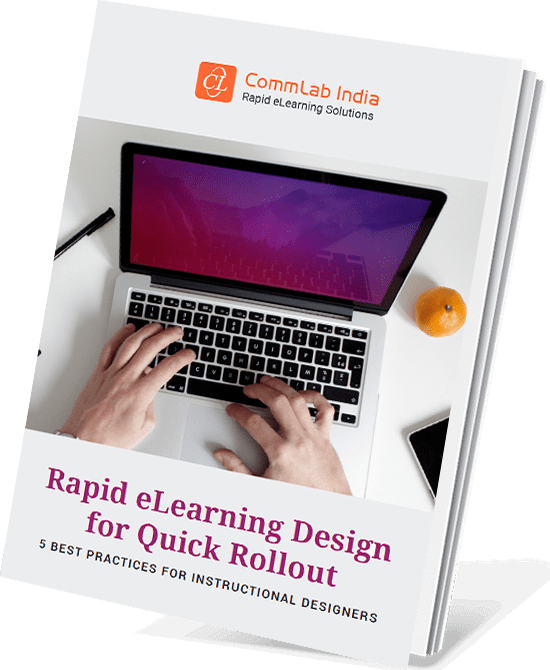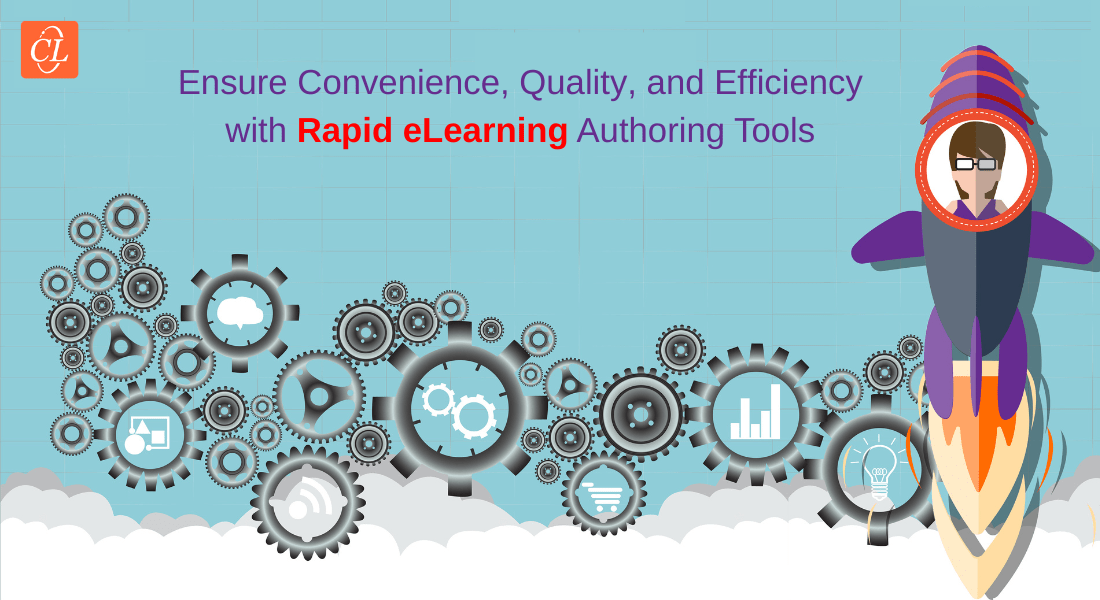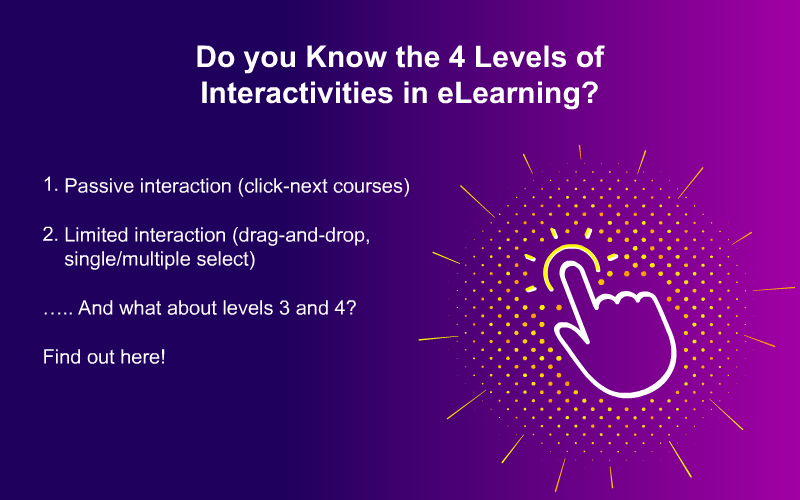5 Benefits of Rapid eLearning Design That Transform Your eLearning Experience

In the world of eLearning, one of the most important aspects is design. For learners to have an engaging and effective learning experience, it’s necessary to have a well-designed course. But what if there was a way to create a great course, quickly and efficiently? Look no further — rapid eLearning design is here to transform your eLearning experiences!
Skeptical If Rapid eLearning Design Can Transform Your eLearning Experience For Good?
These 5 Benefits Will Convince You:
- Saves Time and Money
- Enhances Learner Engagement
- Improves Learning Outcomes
- Increases Content Reuse
- Flexible and Scalable
Continue reading for a bonus!
With a plethora of benefits, it can truly transform your organization’s eLearning experience. But before that, let us discuss about rapid eLearning design –
Introduction to Rapid eLearning Design
Rapid eLearning design is a process for creating eLearning content that is fast, efficient, and effective. It can be used to create both traditional and modern eLearning experiences. Rapid eLearning design can help you transform your eLearning experience by making it more engaging, interactive, and user-friendly. By using rapid eLearning design principles, you can create eLearning content that is both engaging and interactive, while also being responsive to the needs of your learners.
Here are the top 5 benefits of rapid eLearning design that can transform and boost the performance of your online training initiatives.
Benefits of Rapid eLearning Design
Rapid eLearning design can help you create engaging and effective eLearning experiences quickly and efficiently. Here are some of the benefits of rapid eLearning design:
1. Save time and money
Rapid eLearning design can help you save time and money by reducing the need for expensive audio/visual production and lengthy development timelines.
2. Enhance learner engagement
Rapid eLearning design can help you enhance learner engagement by incorporating multimedia, interactivity, and other engaging elements into your eLearning courses.
3. Improve learning outcomes
Rapid eLearning design can help you improve learning outcomes by providing learners with concise, targeted information that is easy to digest and remember.
4. Increase content reuse
Rapid eLearning design can help you increase content reuse by allowing you to quickly repurpose existing resources and create new courses more easily.
5. Flexible and scalable
Rapid eLearning design is highly flexible and scalable, allowing you to quickly adjust your courses to meet changing business and employee training needs.
Now that you know the benefits, you need to focus on the practices and tools that will help you develop an effective rapid eLearning solution. Let’s discuss them –

Rapid eLearning Design for Quick Rollout
5 Best Practices for Instructional Designers
- Working Efficiently with SMEs
- Engaging Learners through Design Strategies
- Working with the Right Authoring Tools
- And More!
Tips and Tools for Developing Effective Rapid eLearning Content
1. Plan your content carefully. Develop a clear and concise outline of what you want to achieve with your rapid eLearning content. This will help you focus on the most important aspects of your message and ensure that your content is well-structured and easy to follow.
2. Use simple language and avoid technical jargon. Remember that your audience may not be familiar with all the terms and concepts related to your topic. Use plain language to explain things clearly and concisely.
3. Make use of multimedia elements. Rapid eLearning design should make use of audio, video, and other engaging multimedia elements to capture learners’ attention and help them better understand your content.
4. Keep it short and sweet. Because rapid eLearning is meant to be consumed in small doses, it’s important to keep your content brief and to the point. Avoid lengthy explanations or paragraphs of text; instead, use short sentences and bullet points to get your message across quickly and effectively.
5. Use engaging visuals. In addition to using multimedia elements, make sure that your visuals are also eye-catching and relevant to your content. Choose images and graphics that will grab learners’ attention and help them better understand what they’re learning about.
→ Download For Free! 116 Proven eLearning Design And Development Tips
And now, for the bonus, here are 5 ways to add interactive elements in your rapid eLearning projects to make them more engaging –
How to Use Interactive Elements in Rapid eLearning Design
Interactive elements are an important part of rapid eLearning design. They can help to make your courses more engaging and effective. Here are some tips on how to use interactive elements in your courses:
1. Use interactive elements to provide instructions or information
Interactive elements can be used to provide instructions or information in a course. For example, you could use an interactive element to explain how to complete a task or activity. This would make the task or activity more understandable for learners.
2. Use interactive elements to ask questions
Asking questions is a great way to engage learners in a course. You could use an interactive element to ask learners questions about the topic of the course. This would help to ensure that they are understanding the material.
3. Use interactive elements to promote discussion
Discussion is an important part of learning. You could use an interactive element to promote discussion among learners. This would help them to share their thoughts and ideas on the topic of the course.
4. Use interactive elements to assess learning
eLearning assessment is an important part of any online learning course. You could use an interactive element to assess learner’s understanding of the material covered in the course. This would help you determine if they are ready to move on to the next topic or not.
5. Use interactive elements to provide feedback
Feedback is an important part of the learning process. You could use an interactive element to provide learners with feedback on their performance in a course. This would help them understand where they need to improve and encourage them to do better in future courses.
Parting Thoughts
Rapid eLearning design is a powerful tool that can be used to create engaging, interactive eLearning experiences. Whether you’re looking to increase engagement with learners or just want to improve the overall quality of your course content, rapid eLearning design can help you achieve your goals. By using this approach, businesses and educational institutions alike can take advantage of its many benefits and create high-quality learning materials in less time than ever before.
Want to know more about rapid eLearning design? This eBook is what you need!





